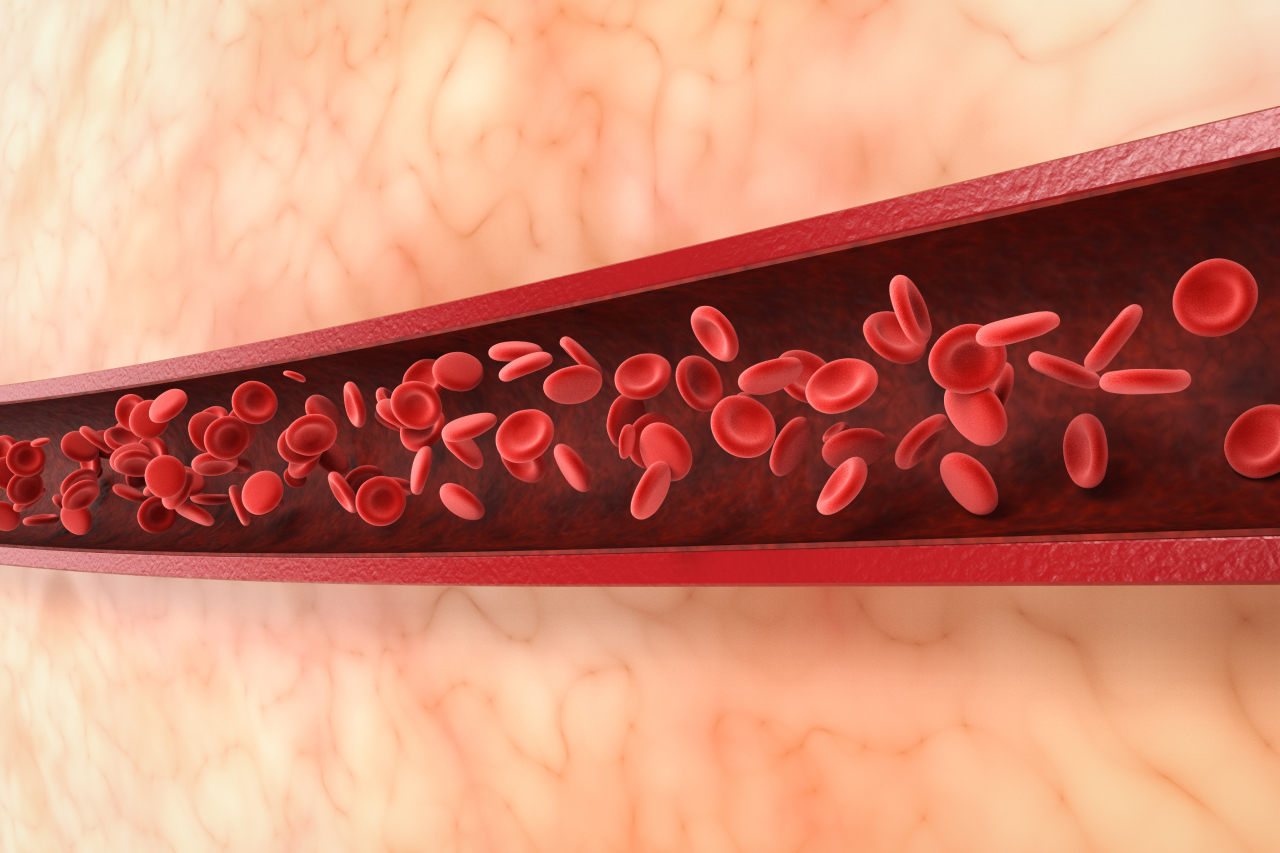Artery plaque refers to the accumulation of fatty deposits, cholesterol, calcium, and other substances on the inner walls of arteries.
This buildup is a hallmark of atherosclerosis, a condition in which the arteries become narrowed and hardened.
Atherosclerosis is a progressive and chronic inflammatory disease that can affect various arteries in the body, including those supplying blood to the heart (coronary arteries), brain (cerebral arteries), and other organs.
The plaque consists of a mixture of cholesterol, fat, calcium, cellular waste, and fibrin, a protein involved in blood clotting.
Over time, this plaque can grow and lead to the narrowing of the arterial lumen, restricting blood flow to vital organs.
Additionally, the plaque can become unstable and rupture, triggering the formation of blood clots.
If a clot blocks an already narrowed artery, it can result in a heart attack, stroke, or other cardiovascular events.
What can cause an artery plaque?
The formation of artery plaque is a complex process influenced by a combination of genetic, environmental, and lifestyle factors.
Here is a detailed explanation of the key contributors to the development of artery plaque:
Atherosclerosis
- Endothelial Dysfunction:
The inner lining of blood vessels, called the endothelium, plays a crucial role in regulating vascular function. When the endothelium is damaged or dysfunctional, it can lead to the initiation of atherosclerosis. Factors such as smoking, high blood pressure, and high levels of LDL cholesterol can contribute to endothelial dysfunction. - Inflammatory Response:
In response to endothelial injury, the body’s immune system is activated. Inflammation plays a pivotal role in the development and progression of atherosclerosis. White blood cells are attracted to the site of injury, and this inflammatory response contributes to the accumulation of cholesterol and other substances within the arterial walls.
Accumulation of Cholesterol and Fats
- LDL Cholesterol:
Low-density lipoprotein (LDL) cholesterol is often referred to as “bad” cholesterol. High levels of LDL cholesterol in the blood can lead to the deposition of cholesterol in the arterial walls. LDL cholesterol can become oxidized, triggering an inflammatory response and promoting the formation of plaque. - Triglycerides:
Elevated levels of triglycerides, another type of blood fat, are also associated with an increased risk of atherosclerosis.
Calcification
Calcium Deposits: Over time, calcium may be deposited in the plaque, causing it to harden.
This calcification can make the plaque more stable but also less flexible, increasing the risk of rupture.
Cellular Components
- Smooth Muscle Cells:
These cells migrate to the site of arterial injury and contribute to the formation of the plaque. - Foam Cells:
These are macrophages (immune cells) that have engulfed cholesterol and become laden with lipids. Foam cells are a major component of early plaque formation.
Genetics
Genetic Predisposition: Some people may be genetically predisposed to atherosclerosis.
Family history can be a risk factor.
Age and Gender
Age:
Atherosclerosis tends to progress with age. The risk increases as individuals get older.
Gender:
Men generally face a higher risk of atherosclerosis than premenopausal women. However, after menopause, the risk for women increases and eventually catches up with that of men.
What are the symptoms of an artery plaque?
The development of artery plaque, particularly in the context of atherosclerosis, often progresses without noticeable symptoms in the early stages.
As plaque builds up and narrows the arteries, the symptoms may become evident.
The specific symptoms can vary depending on the location of the affected arteries.
Here are details about symptoms associated with artery plaque in different parts of the body:
Coronary Arteries (Heart)
- Angina:
Chest pain or discomfort, known as angina, is a common symptom.
It can feel like pressure, tightness, squeezing, or pain in the chest.
Angina is often triggered by physical exertion or stress and typically resolves with rest. - Shortness of Breath:
Reduced blood flow to the heart muscle can lead to breathlessness, especially during physical activity.
Carotid Arteries (Neck)
Transient Ischemic Attacks (TIAs) or Strokes:
Plaque in the carotid arteries can lead to the formation of blood clots.
If a clot breaks loose and travels to the brain, it can cause a transient ischemic attack (TIA) or stroke.
Symptoms may include sudden weakness, numbness, or paralysis on one side of the body, slurred speech, or vision problems.
Peripheral Arteries (Extremities)
Peripheral Arterial Disease (PAD):
Plaque in the arteries supplying the legs and arms can lead to PAD.
Symptoms may include leg pain, cramping, or fatigue during physical activity (claudication).
In severe cases, there may be pain at rest, non-healing sores on the feet or legs, and changes in skin color or temperature.
Renal Arteries (Kidneys)
Hypertension (High Blood Pressure):
Narrowing of the renal arteries can lead to high blood pressure.
In some cases, this may be the only symptom of renal artery stenosis.
Mesenteric Arteries (Intestines)
Abdominal Pain:
Reduced blood flow to the intestines can cause abdominal pain after eating, known as mesenteric ischemia.
It’s important to note that some individuals may not experience symptoms until atherosclerosis has advanced significantly.
Moreover, in some cases, the first sign of atherosclerosis can be a major cardiovascular event, such as a heart attack or stroke.
Is Early Detection Important?
Early Detection of an artery plaque is important for various reasons, including;
Early Intervention and Treatment
Early detection of artery plaque, particularly in the context of atherosclerosis, allows for timely intervention and treatment.
Identifying plaque buildup in the arteries before it leads to significant narrowing or blockage provides an opportunity to implement preventive measures and medical interventions.
Lifestyle modifications, such as adopting a heart-healthy diet, engaging in regular physical activity, and quitting smoking, can be initiated to slow down the progression of plaque formation.
Additionally, medications to control risk factors like high blood pressure and high cholesterol can be prescribed early, reducing the risk of cardiovascular events.
Prevention of Cardiovascular Events
Artery plaque is a precursor to serious cardiovascular events such as heart attacks and strokes.
Early detection and management of plaque can help prevent these potentially life-threatening events.
By addressing the underlying causes and risk factors, healthcare professionals can work with individuals to reduce the likelihood of plaque rupture, blood clot formation, and the subsequent blockage of critical arteries.
This proactive approach significantly contributes to the prevention of major cardiovascular incidents, which can have long-term consequences on an individual’s health and well-being.
Preservation of Organ Function
Arterial plaque can affect blood flow to various organs and tissues, potentially leading to organ damage.
Early detection enables healthcare providers to implement strategies to preserve organ function.
For example, identifying plaque in the renal arteries early on may help prevent or manage hypertension and preserve kidney function.
Similarly, recognizing plaque in the carotid arteries can mitigate the risk of stroke, preserving neurological function.
Timely intervention is crucial to maintaining the health and functionality of vital organs throughout the body.
Improved Quality of Life
Early detection and intervention for artery plaque contribute to an improved quality of life for individuals at risk.
By addressing risk factors and implementing lifestyle changes early in the course of atherosclerosis, individuals may experience fewer symptoms, less progression of the disease, and a reduced likelihood of developing complications.
This proactive approach not only reduces the physical burden of cardiovascular disease but also enhances overall well-being, allowing individuals to maintain an active and fulfilling lifestyle.
Cost-Efficiency and Healthcare Resource Optimization
Early detection and management of artery plaque can be more cost-effective in the long run.
Preventing major cardiovascular events through early intervention reduces the need for extensive medical treatments, hospitalizations, and emergency care.
It also helps optimize healthcare resources by focusing on preventive measures and reducing the economic burden associated with the treatment of advanced cardiovascular diseases.
Regular screenings, risk assessments, and early management contribute to a more sustainable and efficient healthcare system.
6 Proven Methods
While it’s important to note that completely “busting” artery plaque is not a straightforward task, certain lifestyle changes and medical interventions can help manage and slow down the progression of arterial plaque.
Here are six proven methods that can contribute to managing artery plaque and promoting cardiovascular health:
Adopting a Heart-Healthy Diet
Mediterranean Diet: This diet emphasizes fruits, vegetables, whole grains, fish, and healthy fats, such as those found in olive oil and nuts.
It has been associated with a reduced risk of cardiovascular disease and may help manage cholesterol levels.
Regular Exercise
Engaging in regular aerobic exercise, such as walking, running, swimming, or cycling, can help improve cardiovascular health.
Exercise contributes to weight management, helps control blood pressure, and promotes overall vascular health.
Smoking Cessation
Smoking is a major risk factor for the development and progression of artery plaque.
Quitting smoking can lead to immediate and long-term benefits for cardiovascular health, including a reduction in plaque formation and improved blood vessel function.
Controlling Blood Pressure
Managing high blood pressure through lifestyle changes (such as a low-sodium diet, regular exercise, and stress reduction) and, when necessary, medications, can help prevent further damage to the arterial walls and reduce the risk of plaque development.
Managing Cholesterol Levels
Statin medications are commonly prescribed to lower cholesterol levels.
Alongside medication, lifestyle changes like adopting a low-cholesterol diet, reducing saturated and trans fats, and increasing intake of omega-3 fatty acids can contribute to managing cholesterol and slowing down plaque formation.
Antiplatelet Medications
Aspirin and Other Antiplatelet Drugs: These medications can help prevent blood clots from forming on the surface of artery plaques.
Aspirin, in particular, is often recommended for individuals at risk of cardiovascular events, but its use should be determined based on an individual’s health profile and medical history.
It’s essential to note that these methods are part of a comprehensive approach to cardiovascular health.
Individual responses to these interventions may vary, and healthcare professionals should be involved in developing a personalized plan based on an individual’s health status and risk factors.
Additionally, early detection and management of risk factors play a crucial role in preventing the progression of artery plaque and reducing the risk of cardiovascular events.
Regular check-ups with healthcare providers are essential for monitoring and adjusting preventive strategies as needed.
Extra Tips for healthy arteries
Here are additional tips for maintaining healthy arteries that complement the previously mentioned strategies:
Maintain a Healthy Weight
Achieving and maintaining a healthy weight is important for cardiovascular health.
Excess body weight, especially around the abdomen, is associated with an increased risk of high blood pressure, diabetes, and other factors that contribute to artery plaque formation.
Stay Hydrated with Water
Drinking an adequate amount of water is crucial for overall health, including cardiovascular health.
Proper hydration supports blood circulation and helps maintain the fluidity of blood, reducing the risk of clot formation.
Increase Dietary Fiber
Foods rich in soluble fiber, such as oats, beans, fruits, and vegetables, can help lower cholesterol levels.
Soluble fiber binds to cholesterol in the digestive system, preventing its absorption and promoting its excretion.
Manage Stress
Chronic stress can contribute to the development and progression of cardiovascular disease.
Practice stress-reducing techniques such as meditation, deep breathing exercises, yoga, or other activities that promote relaxation and emotional well-being.
Limit Added Sugars
Diets high in added sugars have been linked to obesity, diabetes, and metabolic syndrome—all of which are risk factors for arterial plaque.
Reduce the intake of sugary beverages, sweets, and processed foods.
Incorporate Antioxidant-Rich Foods
Antioxidants help combat oxidative stress, which is involved in the development of artery plaque.
Include a variety of colorful fruits and vegetables in your diet, as they are rich in antioxidants.
Regularly Consume Fatty Fish
Fatty fish like salmon, mackerel, and trout are high in omega-3 fatty acids, which have anti-inflammatory and cardiovascular benefits.
Aim to include these fish in your diet regularly.
Moderate Alcohol Consumption
If you consume alcohol, do so in moderation. Moderate alcohol intake, particularly of red wine, has been associated with certain cardiovascular benefits.
However, excessive alcohol consumption can have adverse health effects.
Get Enough Sleep
Quality sleep is essential for overall health, including cardiovascular health.
Aim for 7-9 hours of sleep per night.
Poor sleep patterns and sleep disorders have been linked to an increased risk of cardiovascular disease.
Regularly Check Blood Sugar Levels
If you have diabetes or are at risk for diabetes, it’s crucial to manage blood sugar levels.
Elevated blood sugar levels can contribute to arterial damage and plaque formation.
Remember that these tips are most effective when combined as part of a holistic approach to a healthy lifestyle.
It’s always advisable to consult with healthcare professionals for personalized advice based on individual health conditions and needs.
Conclusion
Understanding the intricacies of artery plaque formation and its implications for cardiovascular health underscores the importance of proactive measures and early detection.
Artery plaque, a hallmark of atherosclerosis, develops over time, influenced by a combination of genetic factors, lifestyle choices, and environmental influences.
The symptoms associated with arterial plaque are often subtle in the early stages, underscoring the significance of regular health check-ups and screenings.
Early detection emerges as a pivotal factor in the quest for cardiovascular health.
It provides a window of opportunity for timely intervention and the implementation of preventive strategies.
The methods to manage artery plaque are multifaceted, ranging from lifestyle modifications to medical interventions.
Adopting a heart-healthy diet, engaging in regular exercise, quitting smoking, controlling blood pressure, and managing cholesterol levels are proven strategies that contribute to the overall health of the cardiovascular system.
Beyond the specific measures to address artery plaque, the broader context of cardiovascular health is crucial.
Maintaining a healthy weight, staying hydrated, managing stress, and incorporating antioxidant-rich foods into one’s diet are additional considerations that contribute to overall well-being.
These lifestyle choices not only address specific risk factors but also promote holistic health, fostering resilience against the progression of cardiovascular diseases.
Moreover, the role of early detection extends beyond symptom management; it serves as a cornerstone for the prevention of major cardiovascular events.
Identifying and managing arterial plaque early can significantly reduce the risk of heart attacks, strokes, and other complications, thereby preserving organ function and improving the quality of life for individuals at risk.
As we navigate the complexities of arterial health, it is crucial to recognize that personalized care and regular communication with healthcare professionals are paramount.
Every individual’s health profile is unique, and an individualized approach ensures that preventive strategies align with specific needs and circumstances.
Embracing a proactive mindset, coupled with ongoing vigilance and collaboration with healthcare providers, sets the stage for a healthier cardiovascular future.
Through these collective efforts, we move towards a paradigm where early detection and comprehensive strategies converge to promote robust artery health and overall cardiovascular well-being.
FAQs
What is artery plaque, and how does it form?
Artery plaque is a buildup of cholesterol, fats, calcium, and other substances on artery walls. It forms over time due to factors like high cholesterol, inflammation, and endothelial dysfunction.
What are the symptoms of artery plaque?
Symptoms vary based on location. Common signs include chest pain (angina), shortness of breath, and leg pain during physical activity. Severe cases may lead to heart attacks, strokes, or other cardiovascular events.
Why is early detection important for artery plaque?
Early detection allows for timely intervention, reducing the risk of major cardiovascular events. It enables lifestyle changes, medication, and preventive measures to manage plaque buildup and improve overall heart health.
What lifestyle changes can help manage artery plaque?
Adopting a heart-healthy diet, regular exercise, quitting smoking, and maintaining a healthy weight are crucial. Managing stress, staying hydrated, and getting adequate sleep also contribute to overall cardiovascular health.
Can medications help manage artery plaque?
Yes, medications such as statins, antiplatelet drugs, and those for blood pressure control can be prescribed. They play a role in managing cholesterol levels, preventing blood clots, and controlling hypertension.
How can I reduce my risk of developing artery plaque?
Focus on a healthy lifestyle—eat a balanced diet, exercise regularly, avoid smoking, manage stress, and control conditions like high blood pressure and diabetes. Regular check-ups with healthcare providers are essential for early detection and intervention.





